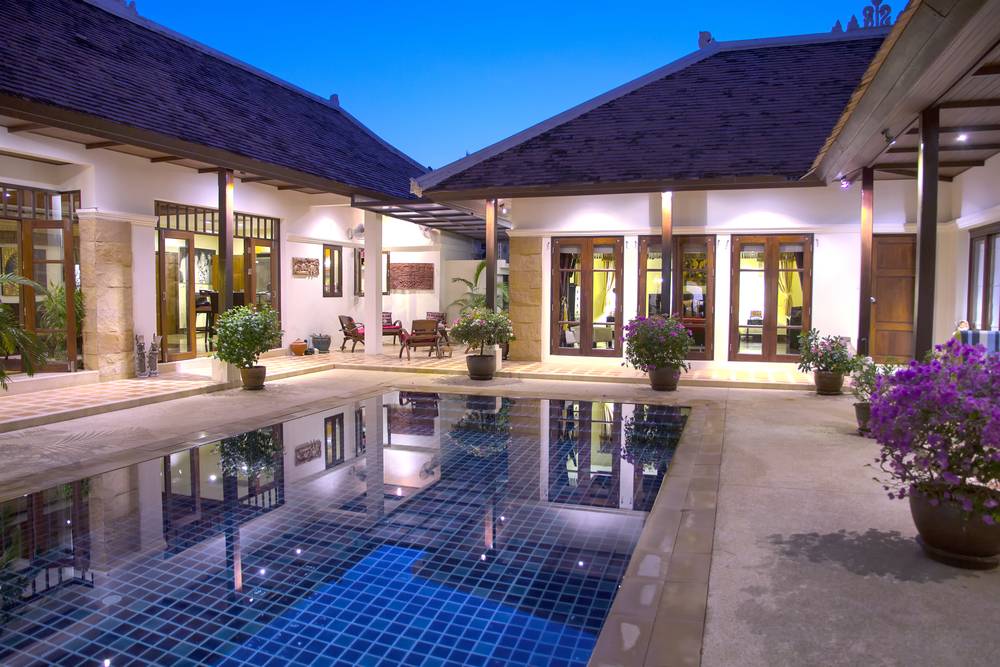Hello Masters TFPers!
My pool design is virtually complete, with build scheduled for spring 2021, and I have a different view WRT equipment compared to what PB has suggested. I have tried to read the entire forum over the past few months (!) and here are my thoughts based on what I think I learned from my research... Would love your perspective.
Pool will be a 34x14 rectangular vinyl hopper style with deep end 7 or 8 deep (TBD now waiting to hear if 8' is feasible without too steep of a slope). Just over 19k gallons. On one of the 34' sides there will be a 6' sheer descent waterfall (w/dedicated 1.5hp pump). On the other 34' side there will be a bench running all the way from shallow to deep end. No spa.
Below are PB's suggestions and my thoughts:
Pls feel free to critique my views here... posting this to learn from you all while I can before it's built! Big thanks
Cheers
My pool design is virtually complete, with build scheduled for spring 2021, and I have a different view WRT equipment compared to what PB has suggested. I have tried to read the entire forum over the past few months (!) and here are my thoughts based on what I think I learned from my research... Would love your perspective.
Pool will be a 34x14 rectangular vinyl hopper style with deep end 7 or 8 deep (TBD now waiting to hear if 8' is feasible without too steep of a slope). Just over 19k gallons. On one of the 34' sides there will be a 6' sheer descent waterfall (w/dedicated 1.5hp pump). On the other 34' side there will be a bench running all the way from shallow to deep end. No spa.
Below are PB's suggestions and my thoughts:
- 24" Jandy SFTM top-mount filter w/ 350 lbs. of silica sand I feel like, as I am planning to upgrade to VS pump as mentioned below, cartridge filter may better accomodate the higher flow rate that VS pump may generate when occasionally run on higher speed...and also better filtration overall... though I am not sure if it would be better compared to the glass media option suggested below. Also I think cartridge better for SWG for reasons explained below...
- Pentair 1HP Superflo single speed Would like to upgrade to either Superflo VS or Intelliflo. I gather the difference is former is cheaper but only 3 set speeds (which are prob enough for me)
- Hayward C250EXP automatic chlorinator I'm planning to upgrade to SWG, but will have them install this as it is included in the quote, as backup
- Rheem Ray-Pak 266, 000 BTU I understand with SWG I should opt for cupronickel version of this..Also, perhaps I should step up one size?
- 1 expanded throat skimmer Do you think with this size pool I should have 2 instead of 1? If 2 skimmers are better, can I still run VS pump at low speed or would I need to (+/-) double it? Also, if I upgrade to VS pump and plan to run it 80% of the time at low speed, would a venturi skimmer be a smarter idea given the lower flow?
- 3 returns I think I should ask for 4 returns, one on each corner of the rectangular pool to facilitate clockwise flow. Also, with a long, 34' bench, I feel I might need extra returns (or venturi jets) along that bench?
- 2 main drains plumbed to the skimmer I think this is done for safety purposes to minimize chance of entrapment, which I appreciate hugely with small kids. But I also feel like separate lines for drains and skimmer is prob way more efficient. Any thoughts please?
- Autofill system I'm good with this!
- Zodiac IQ904PS for automation I feel like if I upgrade to Superflo/Intelliflo VS then automation (and SWG) should be Pentair too. However, I would really like automation to integrate with my google home, which there's none out there. Can someone talk me out of automation please?!! If I have a programmable VS pump, and all auxiliary devices (SWG, heater, acid dispenser potentially) have flow switches, then I just set their % potency first manually and then they all turn on/off automatically with VS pump, don't they? What value does automation add?
- Jandy Aqua Pure for SWG See above. Thinking of Pentair Intellichlo40, just for better integration
- 24" Activated Filter Media (Glass) (11 20kg bags) to use with sand filter instead of sand As mentioned, no clue if cartridge filter would be better vs sand filter w/glass media? Even if both filtered comparable particle size, I feel with SWG I do not want to backwash constantly so I dont have to keep re-adding CYA and so a cartridge filter is perhaps better than sand for salt.. make sense?
Pls feel free to critique my views here... posting this to learn from you all while I can before it's built! Big thanks
Cheers
Last edited:




